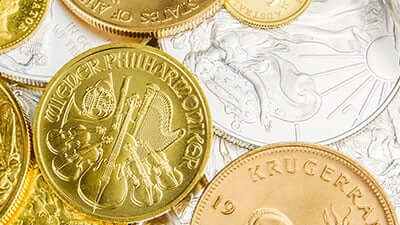As trading for the final month of 2023 kicks off, the gold market is pushing toward a historic breakout.
The monetary metal rallied to $2,050 an ounce on Wednesday, marking its highest close of the year. It then gave back a few dollars on Thursday but advanced over $15 further on Friday.
And gold closed over $2,000 at the end of a month for the first time ever in November, and now set to record a new all-time high on a weekly closing basis as well. This the 4th time the yellow metal has reached current price levels since late 2020.
Barring a severe selloff in the days ahead, gold will finish 2023 with its highest ever annual close. Pretty good considering the headwinds it has faced this year from rising interest rates and negative sentiment.
The mainstream financial media has virtually ignored gold. Investors, meanwhile, have by and large chosen to hide out in money market funds, Treasury bills, and other forms of cash that now actually yield something – at least in nominal terms. Investors have shown little interest in Wall Street-peddled precious metals instruments such as gold ETFs, which have seen net outflows this year.
The fact that gold still elicits yawns from the general public despite closing in on new highs is actually constructive for the bullish case. It means that a huge amount of skeptical money still sitting on the sidelines can come pouring into precious metals if sentiment shifts.
Of course, once gold breaks out decisively into uncharted territory above the $2,100 level, the financial media will no longer be able to ignore it. And investors who had previously dismissed gold as an asset that was going nowhere will no longer have that as an excuse for avoiding diversification into hard money.
Silver, too, is setting up for a breakout, bumping up against the key $26 level Although it’s a long way from being within striking distance of its all-time high, it is rapidly nearing a new high for the year. Silver today is still only half of its all-time high of $50, as its underperformance continues to disappoint precious metals bulls. That said, silver is thought to be the better value right now, along with platinum.
Meanwhile, the Commerce Department reported on Thursday that the “core” Personal Consumption Expenditures price index is rising at an annual rate of 3.5%. That’s a drop from the previous month’s 3.7% reading in the Federal Reserve’s preferred inflation indicator.
The PCE report was roughly in line with expectations and didn’t move markets much. But it does reinforce the perception that inflation is moving closer to the Fed’s 2% target. That means central bankers will have no new reason to raise rates again.
And with interest rates no longer moving higher, either on the short end or the long end of the yield curve, the bullish case for the U.S. dollar may be effectively over.

